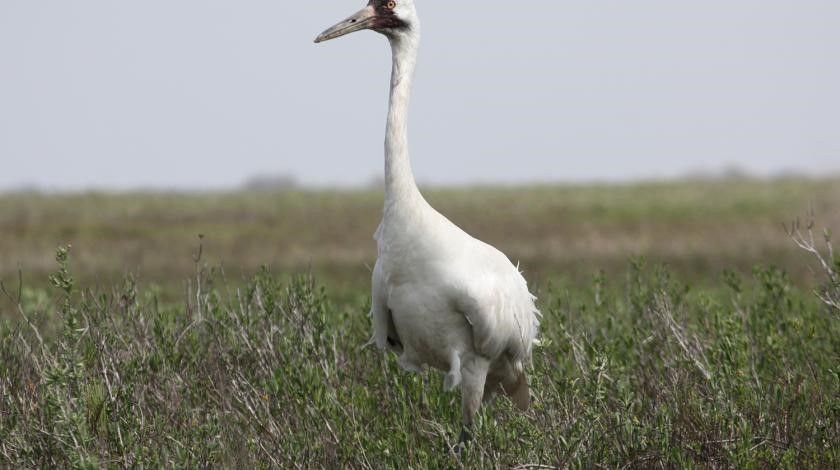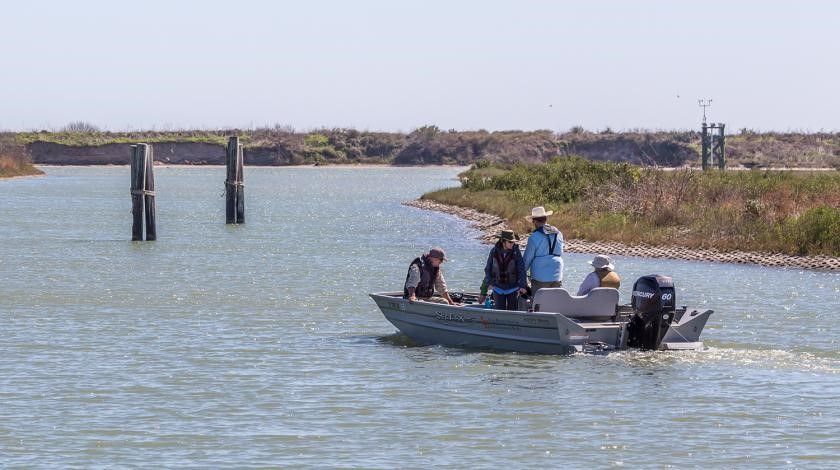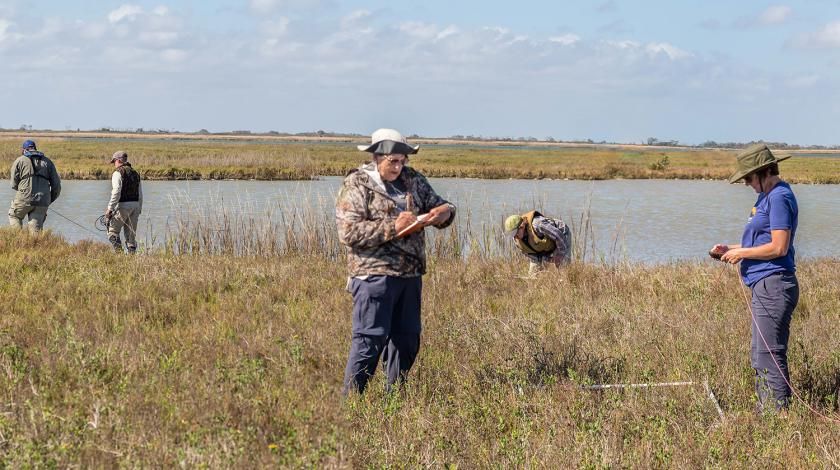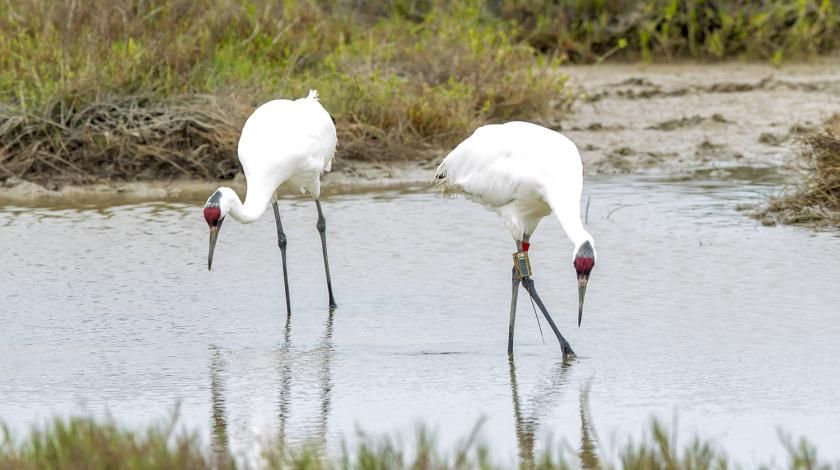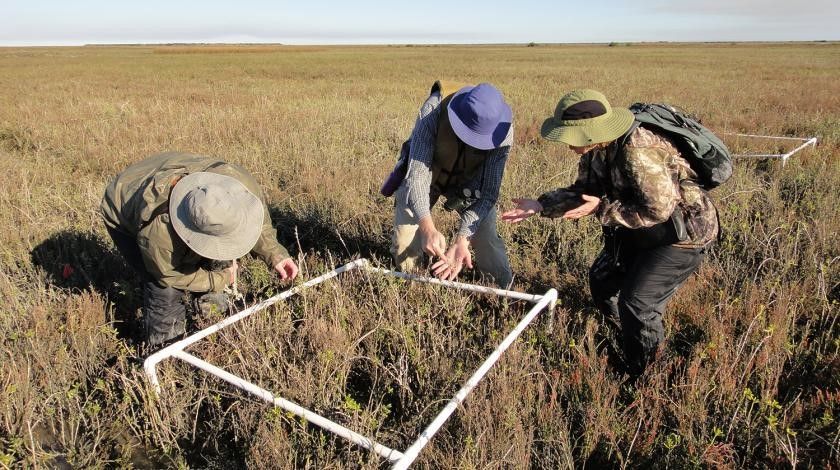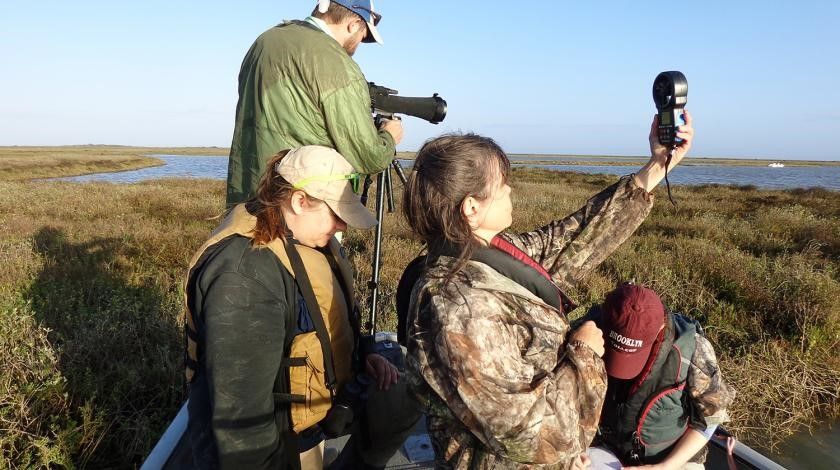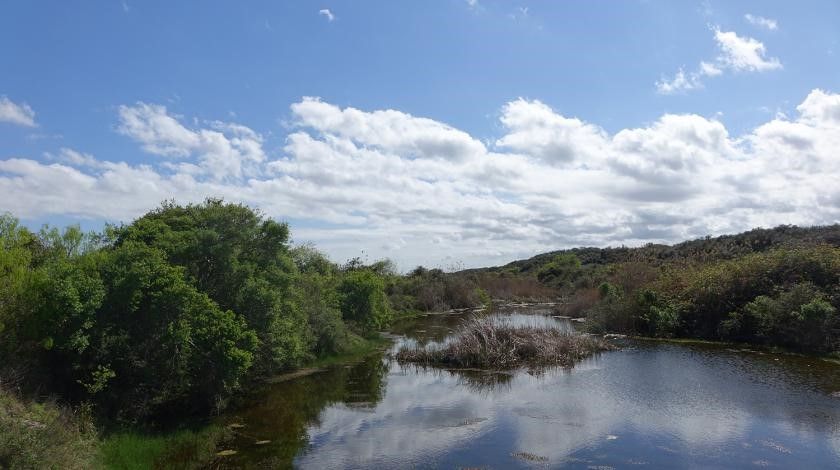Endangered Whooping Cranes on the Texas Coast
Land use changes and hunting pressure pushed these migratory birds to the brink of extinction. Today, researchers are working to determine how environmental drivers and human influences are impacting the wintering home of the endangered whooping crane
In 1941, there were only 15 wild, migratory whooping cranes in North America known to science. These birds once had a population that was believed to be close to 20,000, but hunting and loss of habitat caused a devastating decline. The U.S. and Canada launched conservation efforts, and as a result, the population had increased to roughly 279 by 2011, with the current population thought to be approximately 500 individuals. Despite their modest comeback, whooping cranes and their coastal habitats remain threatened by a wide range of natural and human-induced influences, including drought and sea-level rise caused by climate change, variable freshwater inflows, and urban expansion.
To understand the population dynamics of the whooping crane and to help protect them, you will assist researchers in exploring the complex coastal saltmarsh ecosystems along the Texas Gulf Coast to study how variable hydrology and other environmental changes affect this endangered species. You will closely monitor the birds—recording their locations, behavior, access to food, defense of coastal territories, and the frequency with which they leave their territory. You’ll share the marsh with the cranes, listening to their famous whooping calls as you collect water, soil, and plant samples and conduct abundance surveys of their favorite food resources, crabs and wolfberries, in coastal wetlands.
The whooping crane has become one of the most well-known endangered species in North America—a symbol of human interference with nature. Bringing back these cranes from the brink of extinction would not only be a major conservation success story, it could provide inspiring lessons for how to protect other endangered species around the world.
For more information or to book contact our office (03) 9016 7590 or email
Jan Kleinman | APRIL 18, 2019 ★★★★★
"Flying whooping cranes take the cake"
Do you enjoy the majesty of flying creatures? Do you want to know how cranes behave? Do you want to enjoy the company of a rare human of many, many, many talents? This expedition is for you. Flying whooping cranes just take the cake. They take my breath away every time! Most of our work involved 20-minute sessions of close observations of one crane. Every 15 seconds, we called out the behavior of "our" crane. After 3 days of these observations, we all got pretty confident in our distinctions between an alert bird and a resting bird! Be aware that if you are an occasional or very, very rare (like me) bird watcher, your arms may get tired before 20 minutes are over. Never mind, you will manage. The scientists will give you a few helpful hints for how to take mini-rests. Jeff, the principal investigator, knows about whooping cranes, about wolfberries and crabs, about the entire ecosystem, about boats and national wildlife refuges, about human dynamics and ice hockey AND he cooks and cleans AND...you get the idea. You will be in very capable hands. His assistant helped design this research project and was extremely knowledgeable and companionate. She adores whooping cranes, and her enthusiasm was contagious. Another aspect of the work involved transects through the salt marsh, looking for berries and crabs. During our particular week, both were in scant supply. The berry season was nearly over and the water was very high. You might consider bringing hip waders.
David Rein | MAY 22, 2018 ★★★★★
"Life of the whoopers bringing a better life to me"
This was a rare chance to contribute to an incredible project to understand an iconic and unique bird that was almost completely lost to our knowing today. To begin to understand this bird’s history, the overwhelming work, countless man-hours by so many to bring the Whooping crane to its current population, is so very moving and special to have included in my life experiences. Getting so much time in the boat with Jeff was wonderful as he anticipated and analyzed what the cranes were doing and had done after our hours of observations was thrilling because it gave character and understanding to these captivating birds. Seeing them in flight was magnificent. Photographing and providing help was meaningful to my life. This was my second time here and the wild crane population has increased by one hundred from two years ago. These beautiful birds and these experiences with them have sunk deep in my heart. I am so very glad to have come this way and also taken a bit of Texas home with me to Oregon.
Mary Walker | MARCH 28, 2017 ★★★★★
"Great trip for birdwatching, Gulf Coast ecology, & messing about in boats"
Strongly recommended, would go again. This trip was thoughtfully designed and well organized. Good trip for amateur or experienced birdwatchers -- I know almost nothing about birds & was fascinated. You learn a lot not only about the cranes -- stunning 5-ft tall snow-white birds -- but about many other birds and wildlife in the area, and about the coastal and estuary ecology in general -- super educational. This is one of the few active studies of these cranes and this environment, and this Earthwatch project provides almost all the funding and data collection, so that's satisfying -- you are making a difference on this trip. There's only ~400+ of these western flock whooping cranes in the world, and this kind of research helps us learn how they can thrive. You share accommodations with 1-3 other people of your gender in cabins that are small and basic but fine: clean sheets & towels, hot water, (noisy) air conditioner, (quiet) fan, space heater, refrigerator etc. Each half-day (morning, afternoon) you choose between going out on the boat or going in the van for bird observing sessions or food source data collection. Lunches together as a full group at the boat ramp. Dinners are home cooked (hamburgers, spaghetti, etc) by the grad students with project participants helping out. A few pointers: Weather can be highly variable and unpredictable, from quite cold to fairly hot / tshirt weather. Bring layers, hat, gloves. There's an evening beer-only bar where you can mingle with locals, but no food available and no laundry facilities. The researchers bring a ton of food for the team, and there's usually one or two trips to a market or gas station during the week. There's no bathroom on the small boat or at the boat ramp, so be prepared. Hardcore bug spray needed, the mosquitoes can be fierce. Sunscreen is a must. Internet and phone service is very limited, so don't assume you'll be able to get online even in the evenings -- bring your movies or other materials downloaded on your phone or device. You need to be comfortable getting in and out of a smallish boat, holding big binoculars to your face for up to 20 consecutive minutes, and walking on mud flats, with uncertain slippery footing, through scrub cover ~a foot+ high and water ~ 6+ inches deep (you can get into mud up to your mid-calf, and you may slip and fall, so be aware).
-
 Activity Level: Moderate
Activity Level: Moderate -
 Location: Aransas National Wildlife Refuge, Austwell, Texas, United States
Location: Aransas National Wildlife Refuge, Austwell, Texas, United States -



